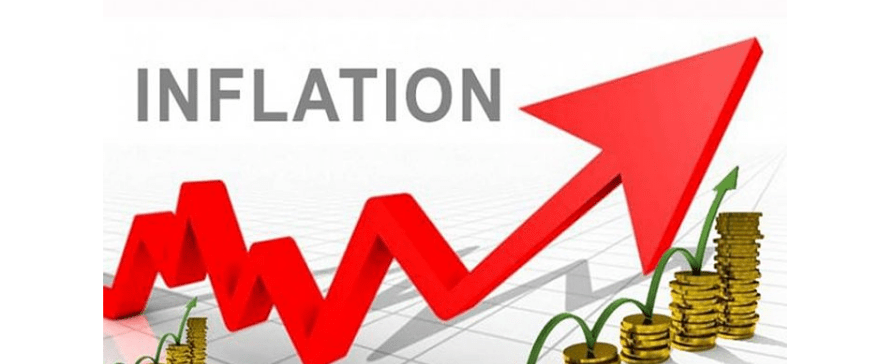
In recent years, the topic of inflation has gained significant attention, especially in the context of the United States economy. In this article, we will delve into the factors contributing to the unprecedented surge in US inflation over the past four decades. rajkotupdates.news: Us inflation jumped 7.5 in in 40 years From its causes and implications to potential solutions, we will break down this complex economic phenomenon and explore its far-reaching effects on individuals, businesses, and the economy as a whole.
Introduction
Inflation, a sustained increase in the general price level of goods and services, has been a persistent concern for economists, policymakers, and the general public. Over the past 40 years, the United States has witnessed a substantial rise in inflation, with a recent surge that has attracted significant attention.
The Historical Context of US Inflation
To understand the current inflationary pressures, we must first examine the historical context. Over the past four decades, the US has experienced periods of both moderate and high inflation, often influenced by economic shocks and policy responses.
Factors Driving Inflation: A Deep Dive
- Government Policies and Monetary Expansion
One key driver of inflation has been the expansionary monetary policies adopted by the Federal Reserve. By increasing the money supply, the central bank aims to stimulate economic growth; however, this can also lead to higher inflation if not carefully managed.
- Supply Chain Disruptions and Increased Production Costs
In recent times, global supply chain disruptions have become a significant contributor to rising inflation. The pandemic-related disruptions, coupled with increased production costs, have led to price hikes across various industries.
- Consumer Demand and Spending Patterns
Shifts in consumer behavior and spending patterns have played a role in inflation. Increased demand for certain goods and services, combined with supply limitations, has created upward pressure on prices.
The Impact of Inflation on Daily Life
- Cost of Living Escalation
The escalating cost of living is a direct consequence of inflation. Everyday expenses such as groceries, housing, and transportation have become more expensive, impacting households across the income spectrum.
- Savings and Investments Erosion
Inflation erodes the purchasing power of savings and investments. Traditional low-risk assets may not keep pace with inflation, leading to diminished real returns.
- Housing Market Challenges
The housing market, a critical component of the economy, faces challenges due to inflation. Rising construction costs and increased demand for housing have driven prices upward, making homeownership less affordable.
Industries Affected by Inflation
- Energy and Transportation
The energy and transportation sectors have experienced notable inflationary pressures. Fluctuating oil prices and supply chain disruptions have led to higher costs for fuel and travel.
- Food and Agriculture
Inflation has impacted the food and agriculture industry, affecting production, distribution, and prices of essential goods. Weather-related events and supply chain disruptions contribute to this trend.
- Healthcare and Education
The healthcare and education sectors have not been immune to inflation. Rising costs in these areas can directly impact individuals’ access to essential services.
Coping Strategies for Individuals and Businesses
- Diversification of Investments
Investors can mitigate the effects of inflation by diversifying their investment portfolios. Assets that historically perform well during inflationary periods include real estate and commodities.
- Wage and Salary Adjustments
To keep up with rising living costs, individuals must negotiate wage and salary adjustments with their employers. Businesses may need to implement regular compensation reviews.
- Operational Efficiency Enhancement
Businesses can navigate inflation by enhancing operational efficiency. Streamlining processes and optimizing resource utilization can help offset rising production costs.
Government Responses and Economic Policies
- Central Bank Interventions
Central banks implement measures to control inflation, such as adjusting interest rates and implementing open market operations. These interventions influence the money supply and borrowing costs.
- Fiscal Measures and Stimulus Packages
Governments can also address inflation through fiscal policies. Stimulus packages, infrastructure investments, and targeted subsidies are tools used to stabilize prices and boost economic growth.
Inflation’s Global Ramifications
- International Trade Dynamics
Global inflation trends can impact international trade dynamics. Fluctuating exchange rates and differing inflation rates among trading partners can influence export and import competitiveness.
- Exchange Rate Volatility
Inflation contributes to exchange rate volatility, affecting international business transactions and investments. Importers and exporters must manage currency risk in an inflation-prone environment.
- The Road Ahead: Tackling Inflation
To address inflation sustainably, long-term structural reforms are essential. Governments must prioritize fiscal discipline, encourage investment in productive sectors, and enhance transparency in economic policies.
Conclusion
The surge in US inflation over the past 40 years has been driven by a complex interplay of factors, including monetary policies, supply chain disruptions, and shifting consumer behaviors. Its impact is felt across industries, from energy and transportation to healthcare and education. Coping strategies, both at individual and business levels, are necessary to navigate these challenging times. By implementing prudent economic policies and fostering global cooperation, it’s possible to pave the way for a more stable and prosperous future.
FAQs
- How does inflation affect my daily expenses?
Inflation leads to higher prices for goods and services, increasing your overall cost of living.
- Can investing in real estate help protect against inflation?
Yes, real estate has historically been considered a hedge against inflation, as property values can rise with price increases.
- What role do central banks play in controlling inflation?
Central banks use tools like interest rate adjustments to influence borrowing costs and, in turn, consumer spending.
- How can individuals prepare for inflation’s impact on their savings?
Diversifying investments and considering assets that perform well during inflation can help protect your savings.
- What is the connection between global trade and inflation?
Inflation disparities among trading partners can affect exchange rates and trade competitiveness, influencing cross-border transactions.
